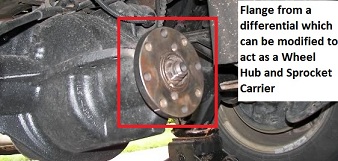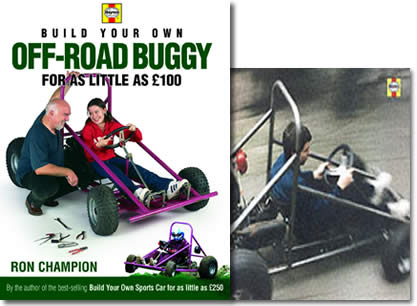Overview
I recently bought the book “Build Your Own Off-Road Buggy for as Little as £100” for £8 including postage and shipping from amazon. Overall it was an enjoyable read. I had hoped for more in-depth discussion and details on certain aspects of the kart. The book provided details on building one particular design but didn’t explain why or how to a lot of the details and measurements chosen. That could well be a good thing for a person making their first kart (or buggy as its called). For you folk working in dollars, 100 UK Pounds = 155 Dollars. After reading the book, and looking at the parts the author used (e.g. the wheels and bearings etc.), it would be a tight stretch to get the whole kart built for £100 or $155.
Audience
The book is geared towards adults helping them build a kart (buggy). The person building the kart would want a good level of DIY skills. It is also expected that a person obtain a welder either by buying a new or second-hand welder, or hiring one. It was difficult following the text and images in some places, trying to fully understand what is been described and I found myself reading paragraphs three and four times.
Relevance
The book was highly relevant to a person confident with DIY skills in building an engine powered go-kart. While it did not explain the “why” of certain angles and details, it provided enough dimensions, that if all followed correctly would work.
I did feel that some of the areas were sparse and outside the scope of home workshop capability. One example of this is where a “differential flange” from a ford car was used and modified to act as a hub for mounting the rear wheels. Another flange was then used for the sprocket carrier and brake disc carrier. While this in fact is a very innovative idea and one which I had not considered, modifying one of these differential flanges would require a metalwork lathe and a lot of work. (Of course the option of buying new or old hubs from a go-kart is suggested).

The book which has 90 pages has just enough information and diagrams to build the standard kart. It is clear that the author has made a few of the karts themselves. The author also got a friend to try following the book and building the same kart.
I do think a simpler design could have been chosen. The kart chassis has 3 members requiring a pipe bender. I also think the pedal design is poor. Using 5mm flat steel bent into an L shape would in my opinion be insufficient and would bend easily (as the pivot is just a hole in the 5mm steel bar). I prefer using 20mm pipe for the pedals.
Chapters
- Skills required
- Tools, equipment and workshop safety
- Sourcing what you need
- Making the frame
- Front axle and steering
- The engine and gearbox
- Drivetrain and brake
- Controls and starting devices
- Finishing and final build
- Using your Buggy
Good Points
- Information on different places to source parts, materials and engineering services were outlined.
- Information on kart safety, safety when building the kart, best places to drive the kart is provided.
- Loads of information on welding, different types of welding and background information on Gas Welding is detailed.
Poor Points
- No explanation of certain areas (such as camber, castor and ackermann angles) of building the part is outlined.
- No set of complete plans, but rather all details were spread out throughout the book.
- To build the kart as shown, you would need a pipe bender and metalwork lathe (to machine the hubs and sprocket carrier)
- While “alternative solutions” were provided for example track rod ends, no measurements or details of these were given.
Conclusion
I have previously purchased complete sets of plans for off-road karts and buggies. While I found this book enjoyable, easy to read and informative, I think it didn’t explain enough of the details. I would have also liked to see 15 pages with complete drawings of all components together. I like to be able to print the 15-20 pages showing the complete set of plans showing all the dimensions together. However for £8 it is certainly cheap and well worth a read and will help you make your first go-kart with a motorbike engine.
